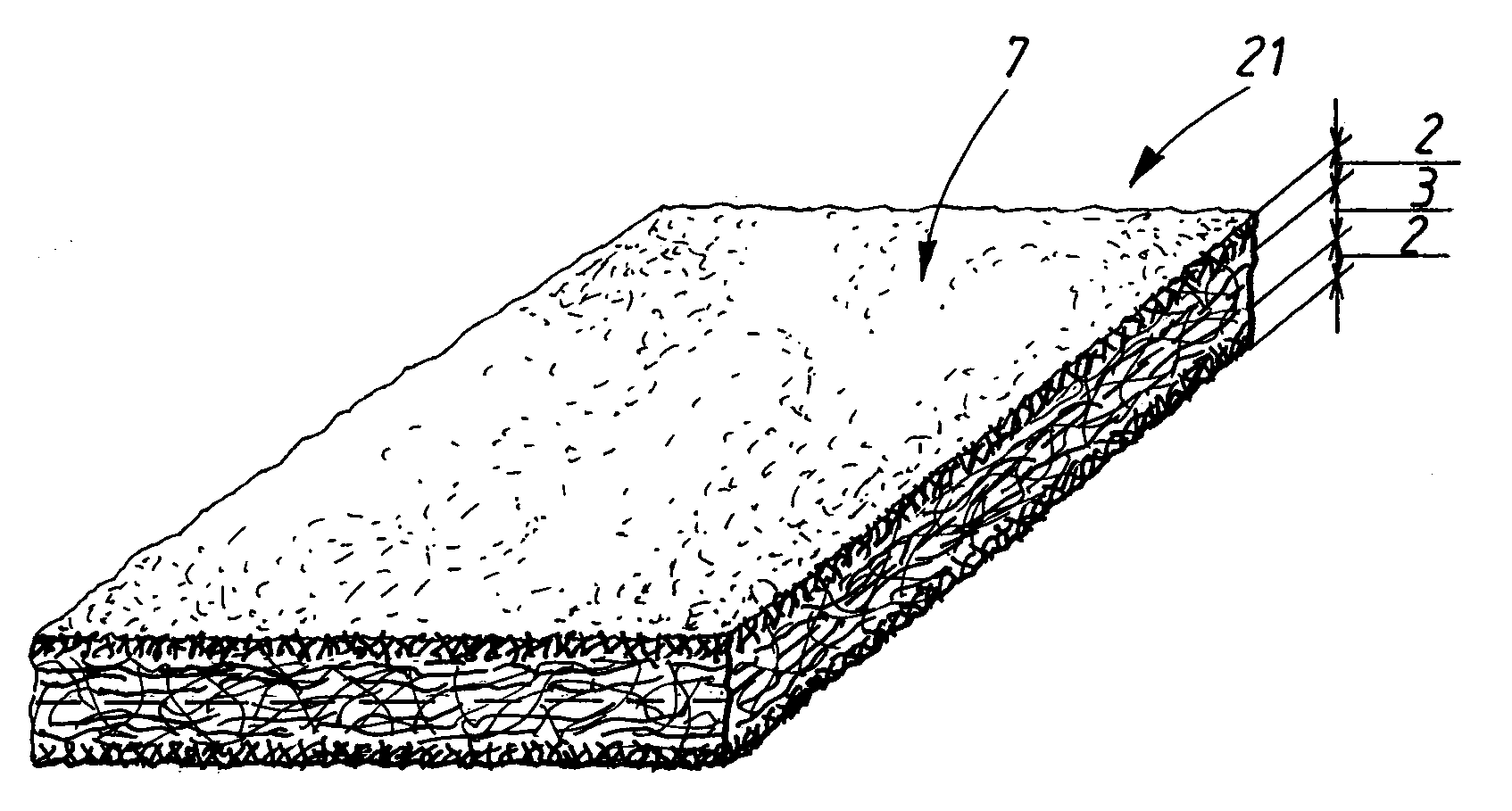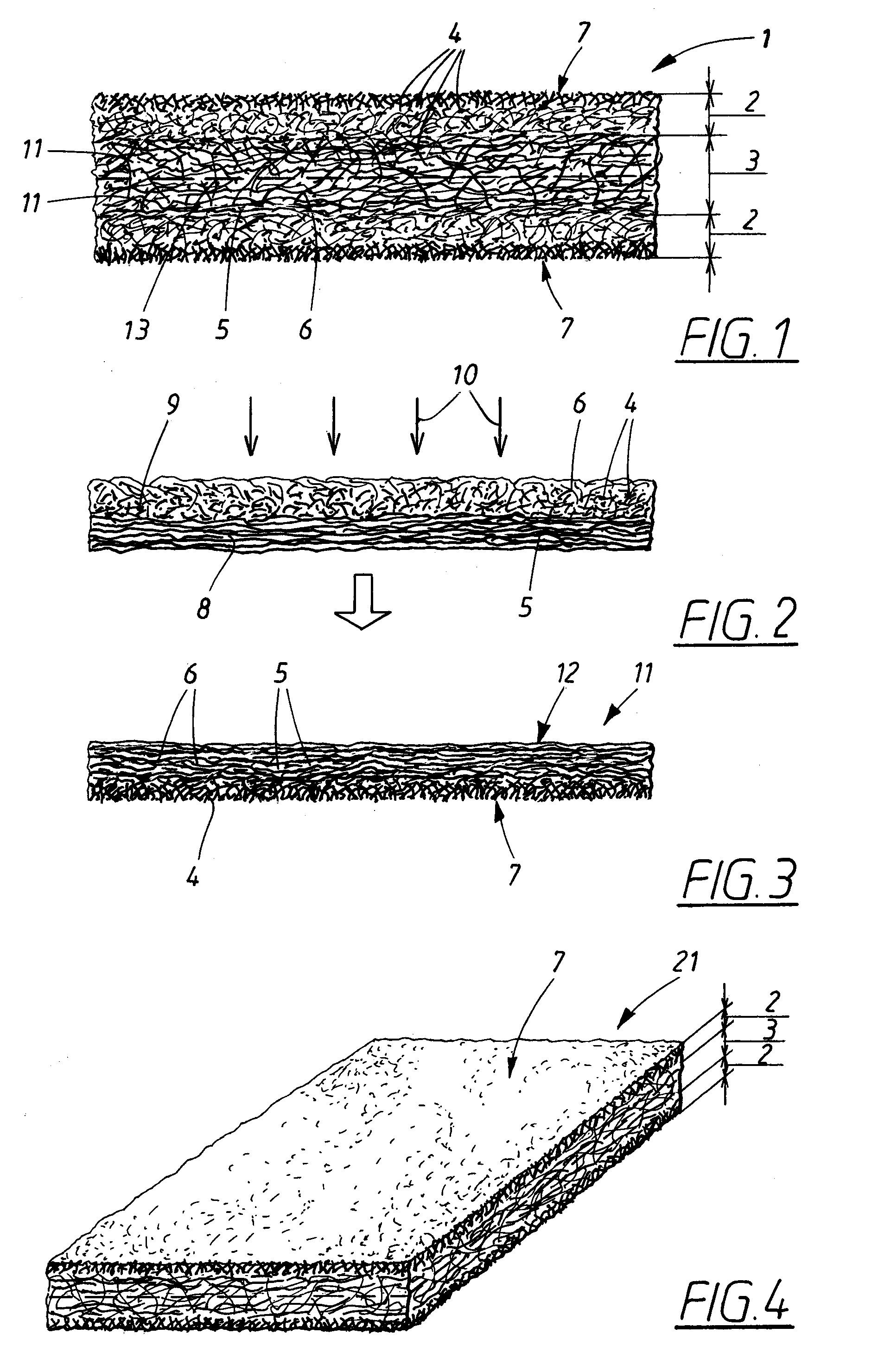Laminate having improved wiping properties and a method for producing the laminate
- Summary
- Abstract
- Description
- Claims
- Application Information
AI Technical Summary
Benefits of technology
Problems solved by technology
Method used
Image
Examples
Embodiment Construction
[0039]The wiping material 1 in FIG. 1 is a layered or stratified fibrous structure having surface regions 2 and a core region 3. The surface regions are rich in absorbent fibres 4, such as cellulosic pulp fibres, viscose, hemp, flax, cotton, or similar, with cellulosic pulp fibres being particularly preferred. Cellulosic pulp fibres are very short fibres, with fibre lengths varying from around 3 mm for softwood fibres and around 1.2 mm for hardwood fibres, and even shorter, for recycled fibres. The absorbent fibres may be a combination or mixture of fibres, such as cellulosic pulp fibres and other longer absorbent fibres. However, the absorbent fibres are preferably predominantly cellulosic pulp fibres since pulp fibres have properties that make the superior for creating a good fluid-distributing capillary network in the surface regions 2 of the wiping material. The core region 3 is rich in non-absorbent fibres 5,6. Suitable non-absorbent fibres are synthetic polymeric fibres such a...
PUM
| Property | Measurement | Unit |
|---|---|---|
| Percent by mass | aaaaa | aaaaa |
| Percent by mass | aaaaa | aaaaa |
| Percent by mass | aaaaa | aaaaa |
Abstract
Description
Claims
Application Information
 Login to View More
Login to View More - R&D
- Intellectual Property
- Life Sciences
- Materials
- Tech Scout
- Unparalleled Data Quality
- Higher Quality Content
- 60% Fewer Hallucinations
Browse by: Latest US Patents, China's latest patents, Technical Efficacy Thesaurus, Application Domain, Technology Topic, Popular Technical Reports.
© 2025 PatSnap. All rights reserved.Legal|Privacy policy|Modern Slavery Act Transparency Statement|Sitemap|About US| Contact US: help@patsnap.com



